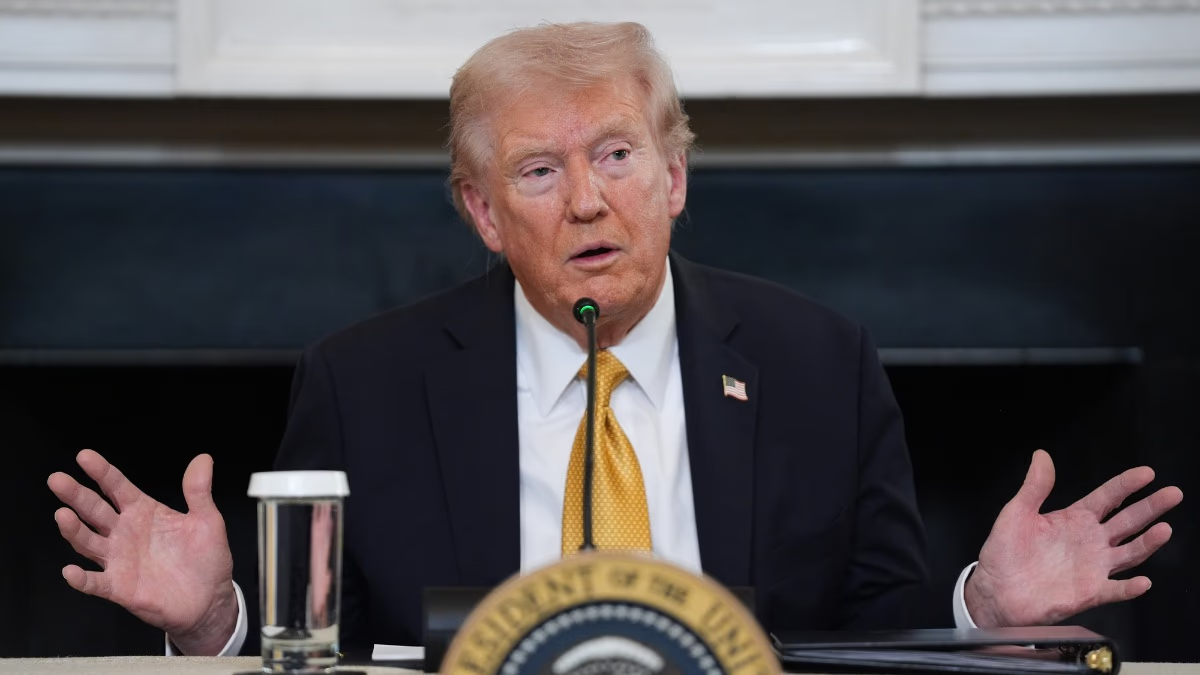What does the record-breaking voter turnout in Bihar's first phase mean? This question is pervasive in everyone's mind. Political parties competing in elections are touting the high turnout as favorable for them, but the implications of the bumper voting in the first phase of the 2025 Bihar Assembly elections are significant. For the first time, voters in Bihar have cast votes in overwhelming numbers.
Analyzing patterns isn't easy. It's crucial to address five questions swirling around in people's minds. They are: Is the high turnout a signal of change in Bihar? Is it to maintain Nitish Kumar? Did the NDA's offer of 10,000 rupees to women work? Is Tejashwi's promise of government jobs the reason for the high turnout? Does this suggest Prashant Kishor's potential as a kingmaker?
Does the High Turnout Signify a Major Change in Bihar?
According to political analysts, an increase in voter turnout doesn't always correlate with a specific electoral outcome. However, high turnout can provide key insights that guide us towards factors affecting outcomes. First, let us discuss if high turnout in Bihar is a major indicator of change.
Click here for in-depth Bihar election coverage
Discover every aspect and detail of each Bihar assembly seat here
The high turnout in the first phase, with voters stepping into polling booths with a clear agenda, suggests the electorate was decisive about who to vote for and against. The historic voting means that voters want to demonstrate their electoral power to the parties in contention. Essentially, Bihar desires a stable government with a strong mandate.
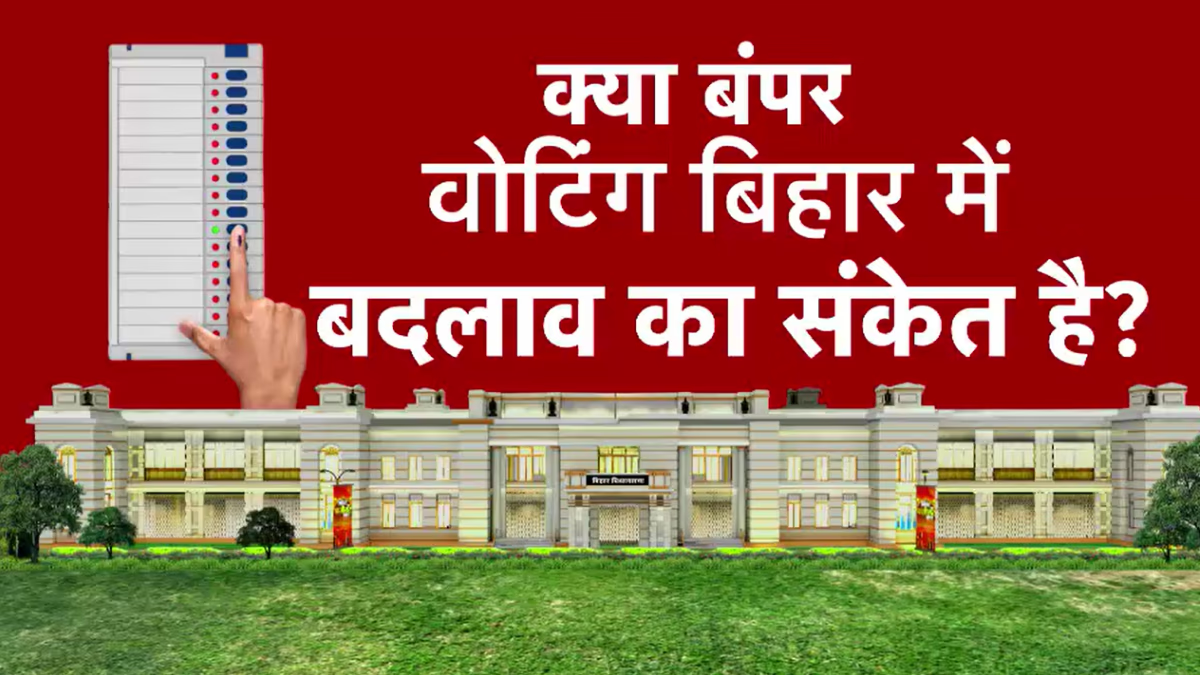
Source: aajtak
But who will ensure stability in Bihar, is what voters have speculated with a mindset of Nitish versus Tejashwi, employment versus development, NDA's electoral promises versus those of the Mahagathbandhan. This is the first time in Bihar's electoral history that nearly 65% of people have voted. Who resides in the public’s heart will be revealed on November 14. But record voter turnout gives a pattern in understanding the nuances of Bihar elections.
If examined against the country’s election history data, the traditional pattern indicates that bustling polling booths are often an indicator of a desire for change. This may mean replacing the current government with a new one. Most election analysts opine that the high turnout during the first phase might hint at change, though it also signifies potential pro-incumbency favoring the current ruling party occasionally.
What Do Bihar's Past Records of High Voting Indicate?
Analyzing election statistics of Bihar and expert opinions, high voter turnout before results is viewed as a sign of power shifts. Over three decades, election results narrate the same theme. When turnout surpassed 60%, Lalu Yadav or his party benefited while adversaries suffered electoral losses.
The voting percentages in Bihar Assembly elections are very intriguing. In 1990, voting was 62.04%. Congress lost power, making Lalu Yadav the CM for the first time. In 1995, voting was 61.79% and Yadav came back into power. Similarly, in 2000, with 62.57% voting, the RJD returned, as exceeding 60% sealed Lalu Yadav's victories.
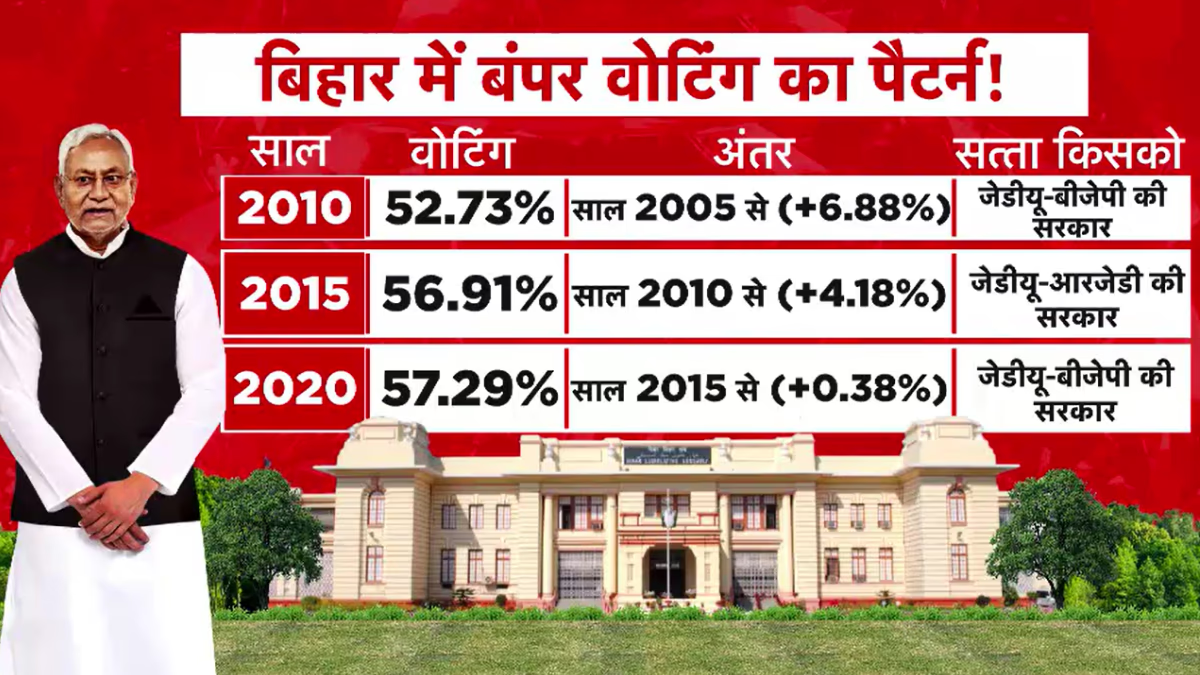
Source: aajtak
Nitish Became CM with Less Than 60% Votes
When Nitish Kumar ousted Lalu in 2005, there was just 45.85% voting. Similarly, in 2010, only 52.73% voted, yet Nitish's NDA achieved a record majority. In 2015, with 56.91% of votes and an alliance with Lalu, Nitish returned as CM. The 2020 election saw 57.29% voting, leading to NDA's return with Nitish. As such, below 60% votes brought Nitish to office, while above favored Lalu's party. This time voter percentage exceeds 60% again.
Can this broad voting be viewed negatively against Nitish, and favorable for Tejashwi? Analyzing results from all 17 post-independence assembly elections shows over 5% vote change altered not just power but political climate, too.
The Major Play with a 5% Increase or Decrease in Voting
Comparing 44.47% turnout in 1962 and 51.51% in 1967, the 7% increase resulted in the first non-Congress government in Bihar – a shift aligns similarly in 1990's power change with 62% voting, versus 1985. In 2000, despite lower 46.5% turnout, Laloo lost to Nitish. Greater voting can thus denote change.
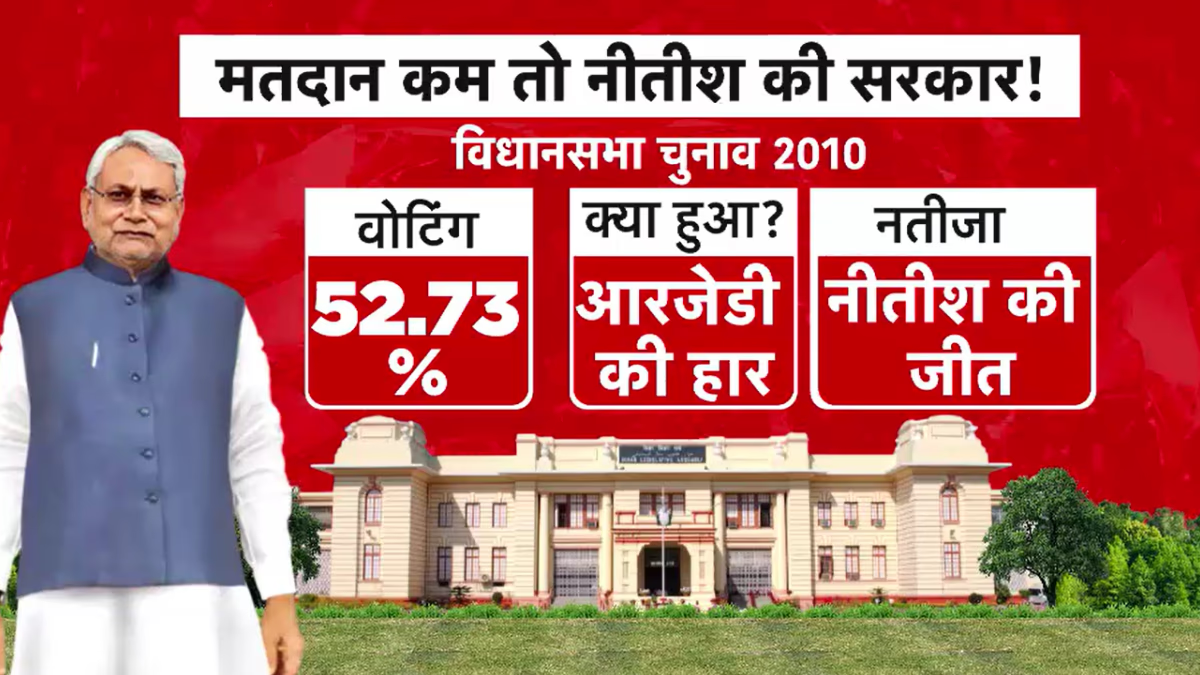
Source: aajtak
Is the Surge in Voting for Nitish?
Now, to the second question. Has the voting boost come to keep Nitish Kumar in power? If yes, let's explore why increased voting seems suggestive of Nitish Kumar's continuance. With eyes set on Nitish Kum︱ar, assured of triumph for two decades, the past three elections had increased turnout followed by his return. This time breaking prior records: could it reaffirm his reign?
Following immediate thanks post-voting, Nitish Kumar urges equally participative turnout on November 11. But the record 64.69% turnout in the first phase holds what implications? Claims relate 64.69% votes to constitutional presence post-SIR, opposed by opposition citing anti-incumbency. NDA reads winning cues; many claims – Nitish is at stake.
Interestingly, the turnout pattern since the last 20 years in Bihar consistently aligned higher voting with Nitish Kumar's gains. From 2005 to 2020, observing assembly poll analyses, Nitish held power for the first time in October 2005. Despite two elections that year, the marginally low 45.85% turnout the second time led to NDA’s debut.
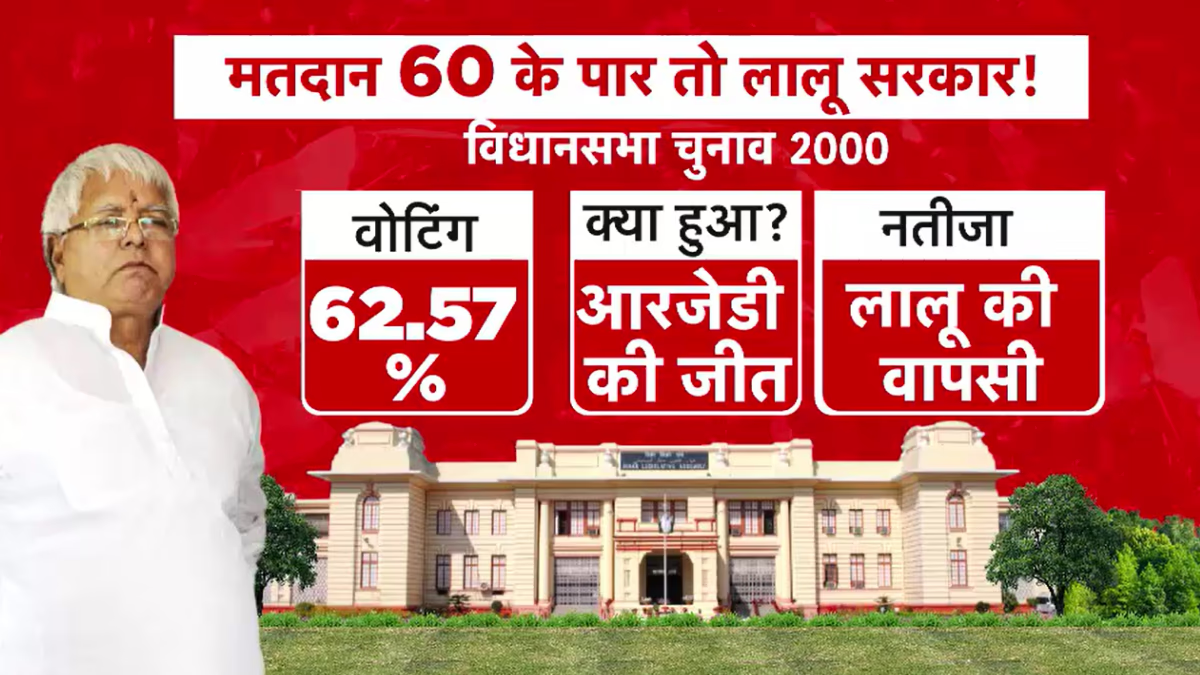
Source: aajtak
Analyzing Bihar Elections from 2005 to 2020
Analyzing Bihar's elections from 2005 shows Nitish first took power in October 2005. Two polls occurred that year—a 46.05% turnout in February led to no majority. However, a slight difference of 45.85% in October saw a power shift as NDA, with Nitish, formed a government.
In 2010’s assembly elections, 52.73% voting happened—6.88% higher than 2005. However, 2015 saw political change: Nitish shifted from BJP, allying with RJD. The 56.91% vote—4.18% more than 2010—benefited the Mahagathbandhan under Nitish’s leadership. By 2020, alliances transformed again, as Nitish left RJD-Congress, joining BJP back in NDA. Despite 0.38% more votes, NDA’s reduced seats maintained governance amid 57.29% voting, unlike before.
A question remains: Is the bumper voting due to women's voting or Tejashwi's job promises? Experts suggest women were proactive voters, incentivized by Nitish’s Jeevika Didi scheme. Meanwhile, Tejashwi's job promise could have also driven the turnout.
Is Bumper Voting Indicating Prashant Kishor as Kingmaker?
Lastly, is the bumper voting suggesting Prashant Kishor’s potential rise as a kingmaker? Could he triumph between NDA and Mahagathbandhan? Prashant Kishor's precise predictions favored by in West Bengal, where survey agencies leaned towards BJP victory, he accurately foresaw them beneath 100 seats—proven true. Now Kishor argues Bihar's migrant labor vote decides the fate. Is the bumper voting steering towards JANSURAJ?
Experts opine JANSURAJ’s entry spiced up Bihar elections, yet envisioning Prashant Kishor as kingmaker seems uncertain.




